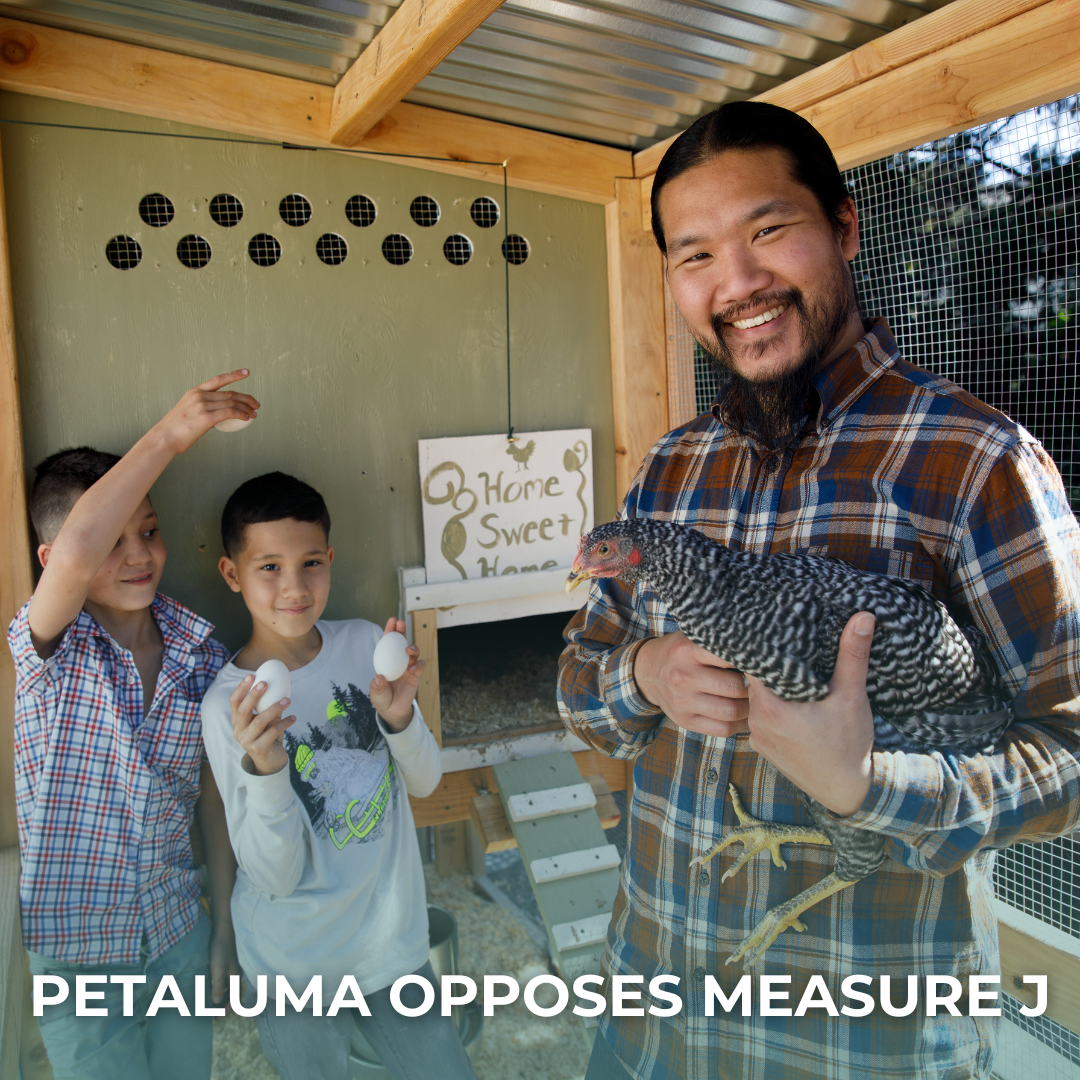
HAGA CLIC AQUÍ PARA ESPAÑOL
At the Monday, July 15, Council meeting, the City Council unanimously passed a resolution affirming support for Petaluma’s farms and agricultural businesses and opposing Measure J.
Measure J is a bill that will appear on the November 2024 ballot that is designed to ban Concentrated Animal Feeding Operations (CAFOs) of any size in Sonoma County. It was initiated by Berkeley-based group called Direct Action Everywhere.
The City opposes Measure J, both because of Sonoma County’s deep and rich agricultural heritage, and because of the crucial role farming and agriculture still play in our economy and our daily lives. Today, Sonoma County farming accounts for significant economic activity and food production for the region. Sonoma County is host to 50 dairies, 84% of them certified organic, milking an average of 350 cows and comprising nearly 41% of California’s certified organic dairies and certified organic mature dairy cattle.
Our dairy herds produce 42.4 Million gallons of milk annually valued at $114 million, with Sonoma County producing 13% of the national volume of organic milk in 2022, and annual values produced of almost $33 million in poultry, $30 million in eggs, $20 million in cattle and calves, and $5 million in sheep, with livestock and poultry production alone responsible for $418 million in total output, $80 million in labor income and almost 1,400 jobs annually.
While the measure’s proponents claim that it would protect animal welfare and small family farms, the language of the measure would actually make dairy and poultry farming at any scale virtually impossible. One of the ways the measure defines a CAFO is any farm that keeps animals stabled or confined for 45 days or more during a 12-month period. Yet according to the Sonoma County Farm Bureau, “even organic, pasture-based dairies can be designated as a CAFO in that they house their animals in the winter months to offer clean-dry bedding, housing, and food to the animals while ensuring the protection of soil and pasture health.”
The measure states that it will protect the environment. However, Sonoma County dairy and poultry farms already are required to follow animal care standards of the National Organic Program or third-party welfare certification programs and comply with Proposition 12 specifying space minimums for egg-laying hens, veal, and breeding hog farms.
At the same time, Sonoma County Dairies are not considered point source polluters and are regulated by the North Coast and San Francisco Bay Regional Water Quality Control Boards. That means they are already subject to regulations prohibiting pollution and specifying water quality standards that dairies must meet. And if local dairies are no longer in the picture, Sonoma County residents would have to buy products trucked in from other locations, increasing greenhouse gas emissions from interstate transportation.
Measure J is also opposed by the Sonoma County Agricultural and Open Space District, which has protected seven of the eight farms that could be impacted by this legislation. The organization says, “Our conservation purpose will not be fully realized if agricultural production is no longer viable on these properties. In addition, Ag+ Open Space has conserved less than 15% of grasslands in Sonoma County. The remaining grasslands are more threatened by subdivision and development when agriculture is no longer possible.”
If Measure J were to pass, Sonoma County’s Economic Development Board estimates that it would result in the loss of $259 million worth of agricultural products and decrease spending in our community by around $38 million. The impact of the loss of our dairies and farms would be felt not just in Sonoma County, but throughout California and the United States.
Read the full text of the Resolution approved at the July 15, 2024, City Council Meeting, and the supporting documents including the staff report and the Sonoma County Economic Development Analysis on the potential impacts of Measure J, by clicking HERE.

